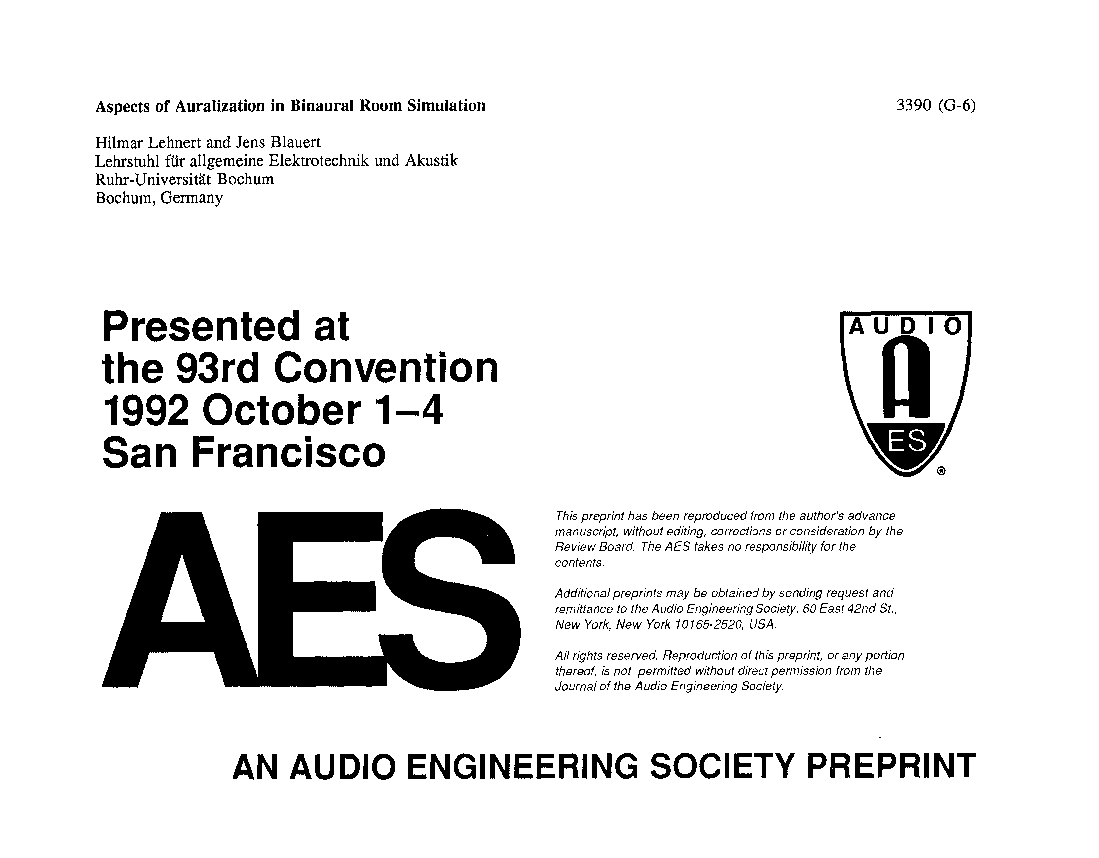Home / Publications / E-library page
You are currently logged in as an
Institutional Subscriber.
If you would like to logout,
please click on the button below.
Home / Publications / E-library page
Only AES members and Institutional Journal Subscribers can download
Binaural room simulation is a method to accomplish listening in spaces which only exist in the form of computer models. The simulation process comprises two stages, namely, sound-field modelling and auralization. A spatial map of virtual sound sources, the interface between the two stages, represents a complete symbolic description of the auditory environment to be simulated. Psychoacoustic assessment of the validity of this symbolic description is reported, and details of the auralization procedure are discussed. As auralization is based on binaural technology, measurement of head transfer functions (HTF) is required. To this end, an appropriate measurement and equalization technique and an auditorily adequate compression algorithm for HTFs are described. Some discussion is devoted to the perceptual effect of a-priori reverberation in the input signals to the binaural room simulation process.
Author (s): Lehnert, Hilmar; Blauert, Jens
Affiliation:
Lehrstuhl fur allgemeine Elektrotechnik und Akustik, Ruhr-Universidit Bochum, Bochum, Germany
(See document for exact affiliation information.)
AES Convention: 93
Paper Number:3390
Publication Date:
1992-10-06
Import into BibTeX
Session subject:
Auralization
Permalink: https://aes2.org/publications/elibrary-page/?id=6743
(589KB)
Click to purchase paper as a non-member or login as an AES member. If your company or school subscribes to the E-Library then switch to the institutional version. If you are not an AES member Join the AES. If you need to check your member status, login to the Member Portal.

Lehnert, Hilmar; Blauert, Jens; 1992; Aspects of Auralization in Binaural Room Simulation [PDF]; Lehrstuhl fur allgemeine Elektrotechnik und Akustik, Ruhr-Universidit Bochum, Bochum, Germany; Paper 3390; Available from: https://aes2.org/publications/elibrary-page/?id=6743
Lehnert, Hilmar; Blauert, Jens; Aspects of Auralization in Binaural Room Simulation [PDF]; Lehrstuhl fur allgemeine Elektrotechnik und Akustik, Ruhr-Universidit Bochum, Bochum, Germany; Paper 3390; 1992 Available: https://aes2.org/publications/elibrary-page/?id=6743